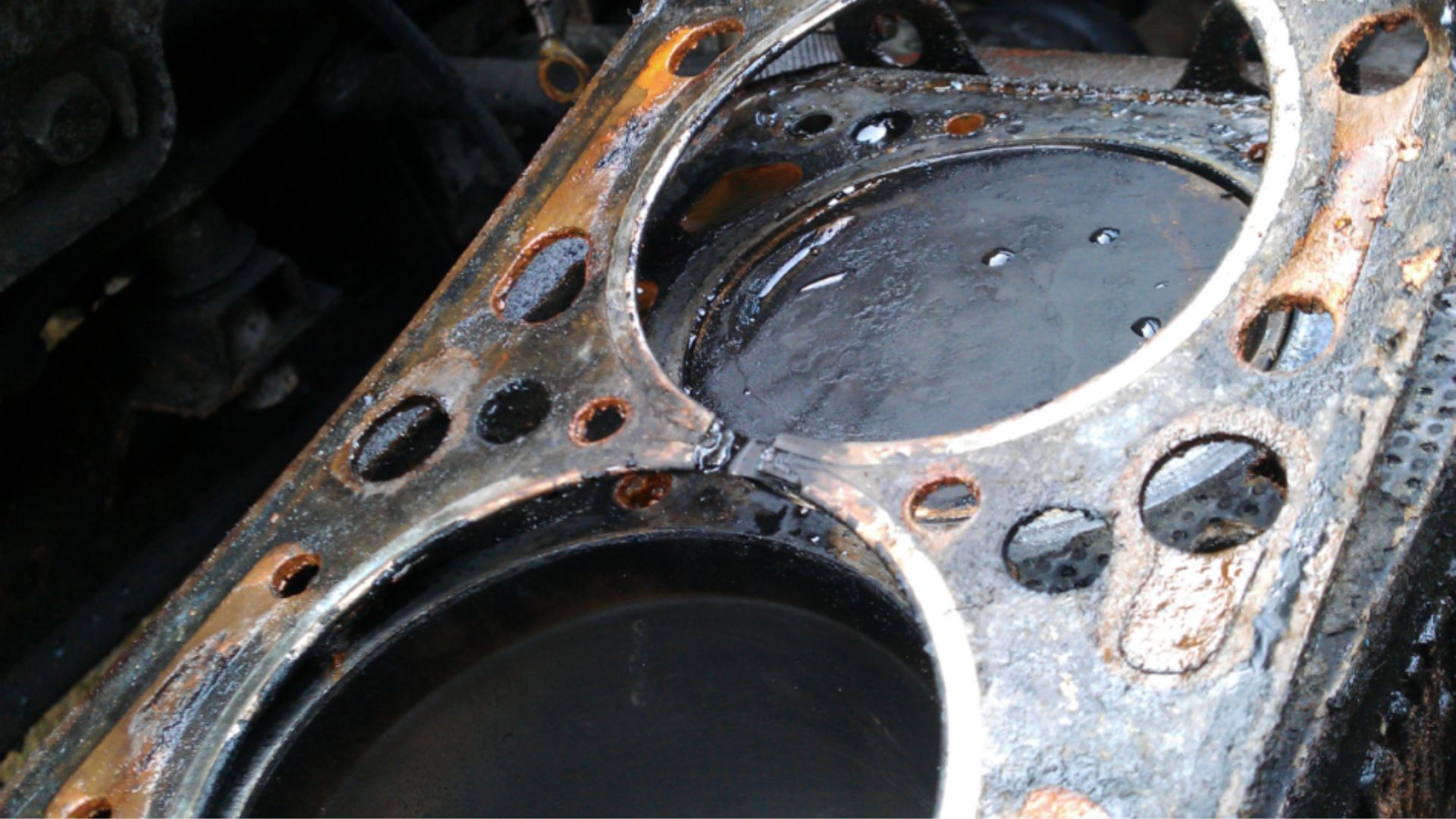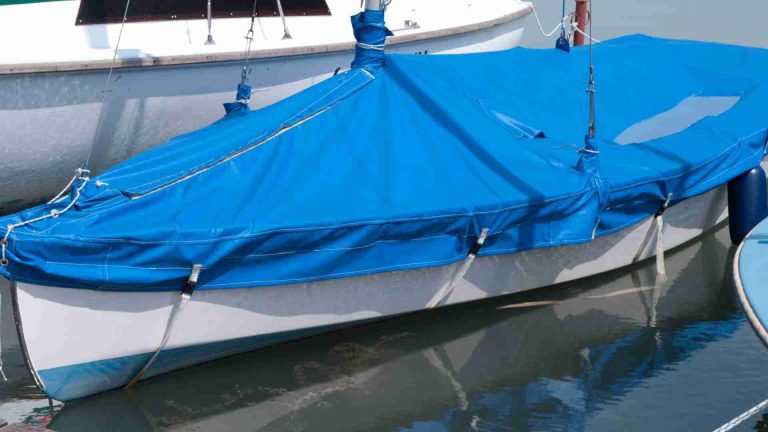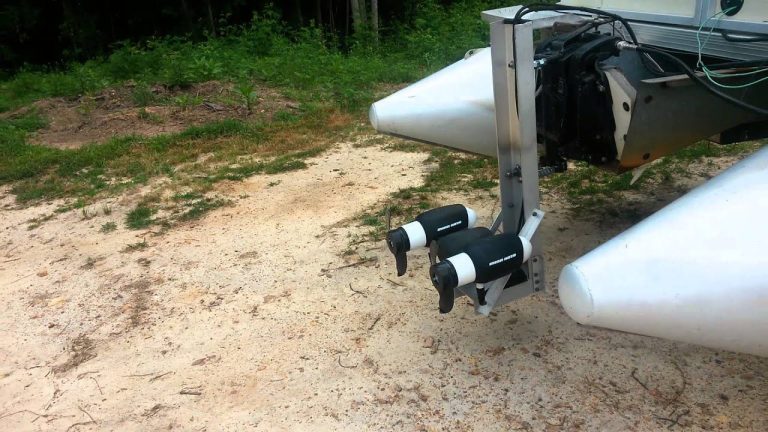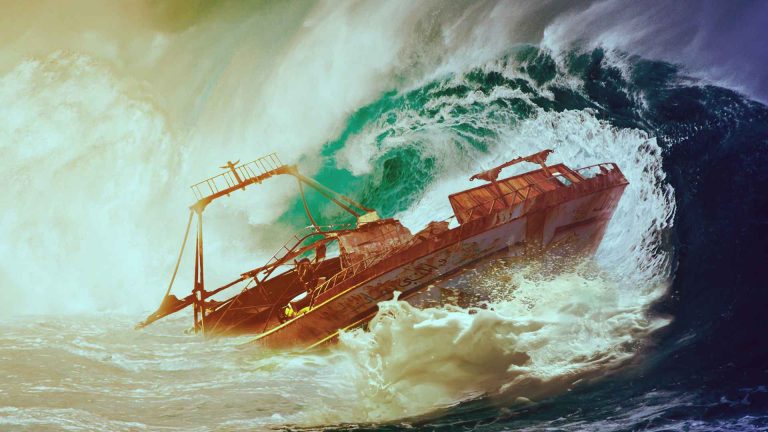Bad Water Pump or Blown Head Gasket?
Picture this: you’re out on the open water, the sun is shining, and you’re enjoying a beautiful day of boating. Suddenly, your boat’s engine temperature starts to climb, and you notice the telltale signs of engine cooling problems. The worry sets in, and you wonder if you’re in for an unexpected and expensive repair.
Engine cooling issues are a common concern for boat owners, and they can quickly turn a perfect day on the water into a stressful experience. Symptoms like overheating, loss of coolant, and erratic engine behavior can leave you puzzled and frustrated. The culprits behind these problems can range from a malfunctioning water pump to a blown head gasket, each requiring a different approach for diagnosis and repair.
In this article, we will delve into the intricacies of engine cooling problems in boats. We will explore the symptoms, potential causes, and diagnostic methods for different cooling system issues. By the end of this article, you’ll have a clearer understanding of these problems and be better equipped to address them effectively, ensuring that your days on the water remain worry-free and enjoyable.
Understanding the Engine Cooling System
The engine cooling system in a boat plays a critical role in maintaining the proper temperature of the engine and preventing overheating. Proper engine temperature is vital for the engine to function optimally, ensuring that your boating experience remains smooth and trouble-free.
The cooling system consists of several key components, each with a specific function. Among these components, the water pump and the head gasket are of paramount importance.
The water pump, often powered by a belt connected to the engine, is responsible for circulating coolant (usually a mixture of water and antifreeze) through the engine and the heat exchanger. This circulation allows the coolant to absorb and carry away the excess heat generated during the combustion process. The water pump ensures a continuous flow of coolant, preventing the engine from reaching dangerously high temperatures.
The head gasket is a sealing component that sits between the engine block and the cylinder head. It is critical because it seals the combustion chambers, preventing coolant and oil from mixing with the fuel and air. A damaged head gasket can lead to a loss of coolant, causing the engine to overheat and potentially resulting in severe engine damage.
A well-functioning cooling system is essential to prevent the engine from overheating, which can lead to extensive and costly damage. It ensures that the engine operates at the right temperature range, allowing for efficient combustion and optimal performance. Regular maintenance and prompt diagnosis of cooling system issues are key to keeping your boat’s engine in top shape, ensuring a safe and enjoyable time on the water.
Symptoms of Engine Cooling Issues
When a boat’s engine cooling system is malfunctioning, there are several telltale symptoms that boat owners may observe. Recognizing these symptoms is crucial because it allows for timely diagnosis and intervention, preventing severe engine damage and costly repairs. Here are some common symptoms of engine cooling issues:
- Overheating: One of the most obvious signs of a cooling system problem is engine overheating. If the engine temperature gauge or warning lights indicate that the temperature is rising above normal operating levels, it’s a clear indicator that the cooling system is not effectively dissipating heat.
- Loss of Coolant: A noticeable loss of coolant, often evidenced by a drop in the coolant reservoir’s level, indicates a problem in the cooling system. Coolant is essential for regulating the engine’s temperature, and any loss can disrupt this delicate balance.
- Steam or Boiling Coolant: If you see steam rising from the engine compartment or observe the coolant boiling over, this is a sure sign of an overheating engine. Steam and boiling coolant are strong indicators that the cooling system is struggling to manage the engine’s temperature.
- Reduced Engine Performance: Engine performance may suffer when cooling issues are present. This can manifest as reduced power, rough idling, or engine misfires. The engine may struggle to operate efficiently under high temperatures.
- Knocking or Pinging Sounds: Unusual noises, such as knocking or pinging, can occur when an engine is overheating. This is due to the irregular combustion caused by increased heat and can lead to engine damage if not addressed promptly.
- Warning Lights: Modern boats often have warning lights that indicate engine temperature issues. If you see warning lights on your dashboard, it’s a clear signal that the cooling system needs attention.
Addressing these symptoms promptly is crucial to prevent severe engine damage. Overheating can lead to warped cylinder heads, cracked engine blocks, and damaged internal components. Coolant loss, if left unattended, can result in further overheating and, in some cases, a complete engine failure. It’s essential for boat owners to be vigilant and responsive to these symptoms to ensure their vessel’s engine remains in good working condition and avoids costly repairs.
Diagnosing a Bad Water Pump
A bad water pump can be a common culprit behind cooling system issues in boats. It is essential to understand what a malfunctioning water pump entails and how it can disrupt the cooling system, potentially leading to engine overheating and damage. Here, we’ll provide a step-by-step guide on how to diagnose a bad water pump and recognize its associated symptoms and warning signs.
What a Bad Water Pump Entails:
A water pump is a critical component of the engine’s cooling system. It is responsible for circulating coolant through the engine to regulate its temperature. A bad water pump typically means that this essential component is failing to perform its role adequately. This can cause a variety of cooling system issues, including insufficient coolant circulation, increased engine temperature, and eventual overheating.
Diagnosing a Bad Water Pump:
- Check for Leaks: Look for visible coolant leaks around the water pump. Leaks can indicate a damaged gasket or seal. Leaking coolant may also result in low coolant levels, further contributing to overheating.
- Inspect the Impeller: The water pump contains an impeller, a rotating component that circulates coolant. Inspect the impeller for damage, corrosion, or signs of wear. A malfunctioning impeller may not circulate coolant effectively.
- Monitor Coolant Flow: With the engine running, observe the flow of coolant in the cooling system. A lack of consistent or strong coolant flow can be a sign of a failing water pump.
Symptoms and Warning Signs:
- Overheating: Engine temperature rising above normal operating levels is a common symptom of a bad water pump.
- Coolant Leaks: As mentioned earlier, visible coolant leaks near the water pump can be a clear sign of trouble.
- Unusual Noises: A failing water pump may produce unusual noises, such as grinding or whining sounds.
- Steam or Boiling Coolant: An overheating engine due to a malfunctioning water pump can lead to visible signs like steam or boiling coolant.
- Reduced Cabin Heater Performance: A failing water pump can also impact the performance of your cabin heater. If you notice reduced warmth from your boat’s heating system, it may be related to cooling system issues.
It’s important to note that diagnosing a bad water pump may require expertise and the appropriate tools. If you suspect a bad water pump based on these symptoms and inspections, it is advisable to consult a marine mechanic or technician for a more accurate diagnosis and necessary repairs. Addressing a failing water pump promptly can prevent more severe engine issues and ensure the longevity of your boat’s engine and cooling system.
Diagnosing a Blown Head Gasket
A blown head gasket is a serious engine issue that can have significant repercussions on the engine’s cooling system and overall performance. To properly diagnose a blown head gasket, it’s essential to understand what it is, how it affects the cooling system, and the diagnostic procedures to confirm its presence.
What Is a Blown Head Gasket:
A head gasket is a crucial engine component that sits between the engine block and the cylinder head. It seals the combustion chambers, preventing the mixing of engine coolant, oil, and exhaust gases with the fuel and air in the engine. When a head gasket “blows,” it means it has developed a leak or breach, allowing these fluids to mix where they shouldn’t. This can have a severe impact on the engine’s cooling system, performance, and longevity.
Impact on the Cooling System:
A blown head gasket can disrupt the engine’s cooling system in several ways. Coolant can leak into the combustion chambers, causing it to be burned during combustion and resulting in white exhaust smoke. It can also lead to decreased coolant levels, causing the engine to overheat as it is unable to maintain proper temperature regulation.
Diagnosing a Blown Head Gasket:
- Pressure Testing the Cooling System: A pressure test can reveal if there’s a leak in the cooling system. If the pressure drops rapidly, it can be a sign of a head gasket issue.
- Examining Exhaust for White Smoke: White exhaust smoke is a common sign of coolant being burned in the engine. If you see white smoke coming from the exhaust, it’s a strong indicator of a blown head gasket.
- Inspecting Engine Oil: Check the engine oil for signs of coolant contamination. Milky or frothy oil on the dipstick or oil cap can suggest a head gasket leak.
Symptoms and Consequences:
- Overheating: A frequent symptom is engine overheating due to the loss of coolant from the cooling system.
- White Exhaust Smoke: As mentioned earlier, white smoke in the exhaust indicates coolant combustion.
- Engine Misfires: A blown head gasket can lead to engine misfires or rough idling as coolant can enter the combustion chambers, affecting the combustion process.
- Loss of Power: Reduced engine performance, power, and efficiency can occur as a result of a blown head gasket.
- Coolant Contamination: As coolant mixes with engine oil, it can lead to engine damage and the need for costly repairs.
A blown head gasket is a significant issue that necessitates immediate attention. Ignoring it can result in severe engine damage and costly repairs. If you suspect a blown head gasket based on the symptoms and diagnostic procedures outlined above, it is advisable to consult a qualified marine mechanic or technician for a thorough diagnosis and appropriate repair. Addressing a blown head gasket promptly is crucial for maintaining the health and longevity of your boat’s engine and its cooling system.

Distinguishing Between the Two Issues
Distinguishing between a bad water pump and a blown head gasket is crucial for boat owners to make informed decisions regarding the diagnosis, repair, or replacement of these critical components. While both issues can manifest with some similar symptoms, they have distinct diagnostic methods, repair complexities, and associated costs.
Symptoms and Diagnostic Methods:
1. Bad Water Pump:
Symptoms:
- Overheating due to ineffective coolant circulation.
- Coolant leaks around the water pump.
- Unusual noises, like grinding or whining.
Diagnostic Methods:
- Visual inspection for leaks.
- Examination of the water pump’s impeller.
- Observation of coolant flow during engine operation.
2. Blown Head Gasket:
Symptoms:
- Overheating from coolant mixing with combustion.
- White exhaust smoke due to coolant combustion.
- Coolant contamination of engine oil, leading to a milky appearance.
Diagnostic Methods:
- Pressure testing the cooling system for rapid pressure loss.
- Inspection of the exhaust for white smoke.
- Examination of engine oil for signs of coolant contamination.
Differences in Repair Complexity and Costs:
Bad Water Pump:
- Repair Complexity: Replacing a bad water pump is a moderate-level repair. It typically involves removing and replacing the pump and addressing any associated issues, like gasket replacement.
- Costs: The cost of replacing a water pump can vary but is generally moderate. Costs may include parts, labor, and any additional repairs.
Blown Head Gasket:
- Repair Complexity: Repairing or replacing a blown head gasket is a complex and labor-intensive process. It often requires disassembling significant engine components, including the cylinder head.
- Costs: Repairing or replacing a blown head gasket can be a significant expense due to the complexity and labor involved. Costs may include parts, labor, machining of engine components, and additional repairs if engine damage has occurred.
Guidance on Diagnosis and Decision-Making:
To make an informed diagnosis and decision regarding repair or replacement:
- Pay close attention to the specific symptoms. While both issues can lead to overheating, the presence of white exhaust smoke and coolant contamination indicates a blown head gasket.
- Consult a qualified marine mechanic or technician for a professional diagnosis. They can perform the necessary diagnostic tests and provide an accurate assessment of the issue.
- Consider the overall condition and age of your boat’s engine. If the engine is older and has seen significant wear, a blown head gasket might be more likely.
- Evaluate the costs and benefits. While repairing a bad water pump is typically less expensive, addressing a blown head gasket may be a long-term investment in the engine’s health.
In summary, distinguishing between a bad water pump and a blown head gasket involves a careful assessment of symptoms, professional diagnosis, and consideration of repair complexities and costs. Making the right choice is essential for maintaining the longevity and performance of your boat’s engine and cooling system.
Preventative Maintenance
Regular preventative maintenance is essential to prevent engine cooling issues and ensure your boat’s engine remains in peak condition. To maintain a healthy cooling system, consider the following steps:
- Schedule Routine Inspections: Regularly inspect the cooling system components, such as the water pump, hoses, and the head gasket. Look for signs of wear, leaks, or damage.
- Change Coolant as Recommended: Follow the manufacturer’s guidelines for changing the coolant. This helps maintain the coolant’s effectiveness and prevents corrosion.
- Keep an Eye on Engine Temperature: Monitor the engine temperature gauge during operation. An unusually high temperature is often the first sign of a cooling system issue.
- Address Issues Promptly: If you notice any symptoms of cooling system problems, take immediate action. Timely diagnosis and repairs can prevent more severe damage.
- Consult a Professional: For complex maintenance and repairs, it’s advisable to consult a qualified marine mechanic or technician who can perform thorough assessments and necessary work.
Conclusion
In conclusion, the engine cooling system is a critical component of your boat, and maintaining it is paramount to ensure your vessel’s longevity and performance. The water pump and head gasket play essential roles in this system, and any issues with them can lead to overheating, loss of power, and costly repairs.
Regular maintenance, diligent inspections, and addressing cooling system issues promptly are the keys to a trouble-free and enjoyable boating experience. By staying vigilant and taking proactive steps to care for your boat’s cooling system, you can prevent severe engine problems and costly repairs, ultimately ensuring your boat remains reliable and ready for your next adventure on the water.
Share Tonneau Cover Fishing Rod Holders: Ultimate Guide with your friends and Leave a comment below with your thoughts.
Read Do You Use a Bobber with Spinnerbait? until we meet in the next article.






